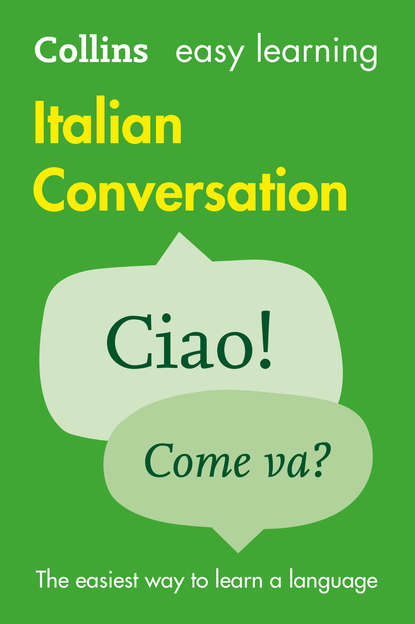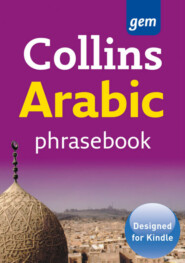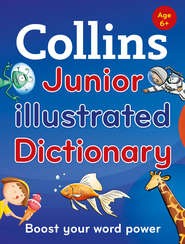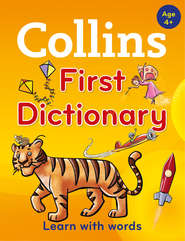По всем вопросам обращайтесь на: info@litportal.ru
(©) 2003-2025.
✖
Easy Learning Italian Conversation
Автор
Год написания книги
2019
Настройки чтения
Размер шрифта
Высота строк
Поля
• It's specially important to notice which syllable you should emphasize when pronouncing infinitives ending in –ere, because they vary. Some, such as avere (to have) and vedere (to see) have normal stress, on the next to the last syllable.
However, there are many important exceptions, for example:
BUONO A SAPERSI!
Past participles such as finito and partito always have the stress on the next to last syllable, but similar-looking words such as subito and compito sometimes have the stress on a syllable you wouldn’t expect.
Small talk (#ulink_1109df55-28d4-5db5-98df-e25ede2c7259)
Come va? – How are things? (#ulink_cf1e99e9-e527-5761-ba3e-79de96973fae)
Whether you’re going to be working in Italy or you’re going to spend some time with your Italian-speaking friends, you’ll want to be able to chat with people and get to know them better. The phrases in this unit will help you talk naturally to friends, family and colleagues in a number of everyday situations.
GREETINGS (#ulink_2dd47df2-8f9f-5e32-bb89-19bf982d6884)
Just as in English, there are several ways of greeting people in Italian, depending on who you are addressing, and whether you want to be formal or not. Say buongiorno (good morning) or buonasera (good afternoon/good evening), if you want to sound polite.
Hello…
BUONO A SAPERSI!
buon pomeriggio (good afternoon) exists in Italian. However it is only used on the radio or television, for example by newscasters. It would sound a bit odd if you greeted people saying buon pomeriggio: stick to buongiorno or, later on in the day, buonasera. Remember to say buongiorno or buonasera as you enter a shop or a restaurant.
Use salve (hi) if you wish to sound a bit more informal, whether you know the people you are greeting or not. If you’re on friendly terms with someone or if you are addressing somebody young, you can say ciao (hi).
Hi…
Use arrivederci to say goodbye to people you don’t know well. You can just say ciao to people you know or to somebody young. buongiorno and buonasera are also often used to say goodbye.
Goodbye…
BUONO A SAPERSI!
Remember to say in Italian arrivederci when you leave a shop or restaurant.
While in English you can use goodnight to mean ‘goodbye’ or to wish somebody a good night’s sleep, in Italian you use buonanotte (goodnight) only before going to bed.
Goodnight…
See you…
BUONO A SAPERSI!
In Italian, if you use a più tardi for see you later, you expect to see the person later on that day, not just some time in the future as in English.
INTRODUCING PEOPLE (#ulink_6d7b7a5f-6c8c-5639-aeab-86f6f57c3d1c)
You may want to introduce people you know to one another. The simplest way is by saying questo (or questa) è (this is) when introducing a person. You can also use ti presento (I’d like you to meet) when addressing someone you know well, or le presento to be more formal. When speaking to several people use vi presento.
This is…
When you’re introduced to someone, you’ll want to know how to react. Just say piacere (nice to meet you) or molto piacere (how do you do?). You can also say piacere di conoscerla, or conoscerti to somebody younger. You can then introduce yourself, by saying your name. In more formal situations, Italians quite often give their surname rather than their first name.
Nice to meet you…
BUONO A SAPERSI!
Italians often use titles like avvocato (lawyer), ingegnere (engineer), architetto (architect) when addressing professionals, even without the name of the person, for example Buongiorno architetto!, in the same way as we would address a doctor.
If you want to introduce yourself to somebody, you can say Piacere… and your name. A more formal way is to use Mi permetta di presentarmi,… (May I introduce myself,…).
Hello, I’m…
BUONO A SAPERSI!
If you have missed an introduction but you are keen to meet somebody you can say:
Mi scusi, non ci siamo presentati, io sono Catherine. Lei è…? (Excuse me, we haven’t been introduced, I’m Catherine, You’re…?).
TALKING ABOUT YOURSELF (#ulink_12aebd16-8240-519a-9ae8-ec14d2852925)
In order to get the conversation going, you’ll want to be able to talk about yourself – what your name is, what you do and so on. To say what your name is in Italian, you use mi chiamo which literally means I call myself, from the verb chiamarsi (to be called). Alternatively, like in English, you can simply say sono (I am), from the verb essere (to be). For more information on the verbs chiamare and essere, see here (#litres_trial_promo) and here (#litres_trial_promo).
My name is…
If you want to say how old you are, use ho followed by your age and anni (literally I have … years). ho comes from the verb avere (to have). For more information on avere, see here (#litres_trial_promo).
I’m… years old
BUONO A SAPERSI!
If you have to ask Quanti anni ha? (How old are You?) you can always add se non sono indiscreto (or indiscreta) (if You don’t mind my asking).
To talk about who you are and what you do, use sono (I am), ho (I have) and faccio (I do). These come from the verbs essere (to be), avere (to have) and fare (to do). For more information on these verbs, see here (#litres_trial_promo), here (#litres_trial_promo) and here (#litres_trial_promo).
I’m…
When you say what you do in Italian, you use the verb fare (to do): I’m a baker is faccio il panettiere. The verb essere (to be) can also be used, but it is less common.
I’m a …
BUONO A SAPERSI!
Remember that when talking about people’s jobs, a in English is often translated by the definite article (il, la and so on) in Italian.
I have…
I live…











